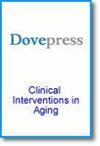前方直接入路全髋关节置换术治疗侧位股骨颈骨折
IF 3.7
3区 医学
引用次数: 0
摘要
目的比较股骨颈骨折人工全髋关节置换术(THA)侧位直接前入路法(DAA)与后外侧入路法(PLA)的临床疗效:对2019年9月至2021年8月期间收集的200例接受THA的患者进行比较。收集切口长度、术中出血量、手术时间、术后血红蛋白与术前水平的差异、住院时间、术后下地时间、疼痛视觉模拟评分(VAS)、术前和术后髋关节Harris评分、术后6个月髋臼外展角和髋臼前倾角的测量结果,并对所有病例进行至少2年的随访:与 PLA 组相比,DAA 组切口长度更短、术中失血量更少、术后血红蛋白较术前降低更少、住院时间更短、术后首次下地时间更早,但手术时间的比较无统计学意义;与 PLA 相比,DAA 组患者术后早期的 VAS 更低;术后 6 周和 6 个月时,DAA 组患者的髋关节 Harris 评分更高;术后 6 个月时,两组患者的髋臼外展角和髋臼前倾角无明显差异。结论:与PLA相比,DAA在THA中具有创伤小、疼痛轻、出血少、下床活动时间早、住院时间短、早期髋关节功能好、康复快、关节稳定性好等优点。本文章由计算机程序翻译,如有差异,请以英文原文为准。
Direct Anterior Approach Total Hip Arthroplasty for Femoral Neck Fractures in the Lateral Position
Objective: To compare the clinical efficacy of artificial total hip arthroplasty(THA) for femoral neck fracture between direct anterior approach(DAA) in lateral position and posterior lateral approach(PLA).
Methods: Comparison of 200 cases of patients who underwent THA collected between September 2019 and August 2021 was done. Incision length, intraoperative bleeding, operative time, difference in postoperative haemoglobin from preoperative levels, length of hospital stay, postoperative time to get off the floor, visual analogue score (VAS) for pain, preoperative and postoperative Harris scores for the hip, and measurements of the acetabular abduction angle and anterior acetabular tilt angle at 6 months postoperatively were collected, and all the cases were followed up for at least 2 years.
Results: Compared with the PLA group, the DAA group had a shorter incision length, less intraoperative blood loss, less postoperative haemoglobin reduction compared with the preoperative period, a shorter hospital stay and an earlier first time to get off the floor after surgery, however, the comparison of operative times was not statistically significant; Patients in the DAA group had a lower VAS in the early postoperative period compared to PLA; Patients in the DAA group had higher hip Harris scores at 6 weeks and 6 months postoperatively; There was no significant difference in acetabular abduction angle and acetabular anterior tilt angle between the two groups at 6 months postoperatively.
Conclusion: Compared to PLA, DAA in THA is minimally invasive, has less pain, less bleeding, earlier time out of bed, shorter hospital stay, better early hip function, faster rehabilitation, and better joint stability.
Keywords: direct lateral approach, DAA, femoral neck fractures, total hip arthroplasty, THA, Hip function, postoperative rehabilitation
Methods: Comparison of 200 cases of patients who underwent THA collected between September 2019 and August 2021 was done. Incision length, intraoperative bleeding, operative time, difference in postoperative haemoglobin from preoperative levels, length of hospital stay, postoperative time to get off the floor, visual analogue score (VAS) for pain, preoperative and postoperative Harris scores for the hip, and measurements of the acetabular abduction angle and anterior acetabular tilt angle at 6 months postoperatively were collected, and all the cases were followed up for at least 2 years.
Results: Compared with the PLA group, the DAA group had a shorter incision length, less intraoperative blood loss, less postoperative haemoglobin reduction compared with the preoperative period, a shorter hospital stay and an earlier first time to get off the floor after surgery, however, the comparison of operative times was not statistically significant; Patients in the DAA group had a lower VAS in the early postoperative period compared to PLA; Patients in the DAA group had higher hip Harris scores at 6 weeks and 6 months postoperatively; There was no significant difference in acetabular abduction angle and acetabular anterior tilt angle between the two groups at 6 months postoperatively.
Conclusion: Compared to PLA, DAA in THA is minimally invasive, has less pain, less bleeding, earlier time out of bed, shorter hospital stay, better early hip function, faster rehabilitation, and better joint stability.
Keywords: direct lateral approach, DAA, femoral neck fractures, total hip arthroplasty, THA, Hip function, postoperative rehabilitation
求助全文
通过发布文献求助,成功后即可免费获取论文全文。
去求助
来源期刊

Clinical Interventions in Aging
GERIATRICS & GERONTOLOGY-
CiteScore
6.20
自引率
2.80%
发文量
193
期刊介绍:
Clinical Interventions in Aging, is an online, peer reviewed, open access journal focusing on concise rapid reporting of original research and reviews in aging. Special attention will be given to papers reporting on actual or potential clinical applications leading to improved prevention or treatment of disease or a greater understanding of pathological processes that result from maladaptive changes in the body associated with aging. This journal is directed at a wide array of scientists, engineers, pharmacists, pharmacologists and clinical specialists wishing to maintain an up to date knowledge of this exciting and emerging field.
 求助内容:
求助内容: 应助结果提醒方式:
应助结果提醒方式:


